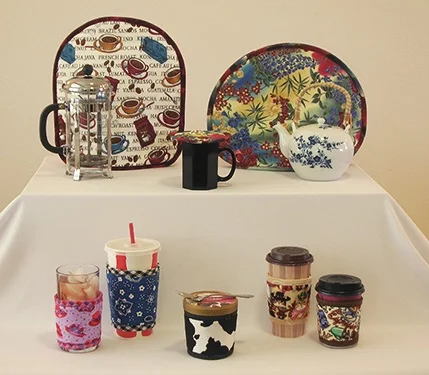Coffee drinking under siege: A not so cozy history (Part 1)
By Perry Luckett, CoffeeMan1
These days, coffee seems to hold a revered spot in our popular culture, with thousands of chain and independent coffee shops plying their trade, almost daily stories of its healthful effects, and warnings of climatic conditions that might destroy production of our beloved brew causing more alarm than the melting of Arctic icecaps. You might wonder, then, has any government actually banned coffee as a threat to public health or societal order? The answer is yes—six times ranging from the early 16th century to 1792. I’ll cover the first two here.
Mecca and Persia
In 1511 Khair Beg, a young governor of Mecca, called for the closure of all coffee houses, in part because his medical advisers warned it was bad for people's health. But the governor’s main reason was that he believed coffee stimulated radical thinking and gathering of like-minded people, which might unite his opposition. Anyone caught drinking or selling coffee at that time was beaten. The ban was finally rescinded in 1524 by an order of the Ottoman Turkish Sultan Selim I, with Grand Mufti Mehmet Ebussuud el-İmadi issuing a fatwa allowing coffee to be drunk again. Beg was executed for his troubles by command of the Sultan himself, who further proclaimed coffee to be sacred.
Still, misunderstanding of coffee’s effects and fear of coffeehouses lingered—some saw them as seedy meeting places, similar to whorehouses. By 1535, religious critics were pointing to Islam's Hanafi laws, which forbade drunkenness, as a justification to ban coffee again. But whether that concept of "drunkenness" included caffeine jitters depended on which school of Muslim thought they subscribed to at the time.
A century after Khair Beg’s ban, two Persian doctors also weighed in on behalf of coffee critics. According to Calestous Juma, the Kenyan-born Harvard Kennedy School professor, the doctors’ 1611 tract on coffee claimed the beverage had vile characteristics. They said the governor should receive “great glory and abundant rewards” if he opposed the drink, thus appealing to the governor's desire for legitimacy and power as a ruler.
This opinion of coffee’s characteristics continued a long history of disagreement on whether coffee was harmful or beneficial to one’s health. The Encyclopaedia Iranica (online) discusses prevailing theories in 16th century Persia (Iran), which recognized both good and bad properties. The work of Moḥammad-Ḥosayn ʿAqīlī exemplifies these contradictory views. On one hand, he reported it was a laxative and diuretic that benefited the stomach, was useful for lowering blood pressure and for relieving most headaches, and could help in treating smallpox, measles—especially when mixed with pearls, and hemorrhoids. Drinking coffee quenched thirst. Sprinkling it on wounds helped to heal them.
On the other hand, the harmful effects attributed to drinking coffee included headaches, pallor, loss of sex drive, insomnia, heart palpitations, melancholy, nightmares, and dryness of the respiratory passages. If drunk to excess it could even cause brain disorders, though ʿAqīlī considered this result likely only if the beans were very stale and roasted black.
As strange as all this sounds, others have reached the same conclusions about coffee drinking and launched their own bizarre propaganda campaigns against it. Although religious and health objections often played a role in these bans, the other common thread was fear of its “social qualities”—its tendency to lead to sale and consumption in public meeting places. That often meant a place of plotting and sedition against autocratic rule.
Italy: the local clergy get burned (not literally)
When coffee arrived in Europe in the late 16th century, clergymen pressed for it to be banned and labeled satanic. When it came to Venice in 1615, the local Catholic clergy reacted to this new beverage with suspicion or fear, calling it the “bitter invention of Satan.” Some of that objection arose because coffee came from Turkey and the Arabian Peninsula—the mystical lands of the East—and had the reputation of being an exotic and intoxicating liquor. For Catholics, it had the “whiff of Islam, infidels, and sexual aberration.” It seemed suspiciously like a substitute for wine as used in the Eucharist.
The controversy was so great that Pope Clement VIII (1592–1605) was asked to intervene. But this request from the clergy backfired. Clement chose to taste the beverage for himself before deciding, found it delightful, and decreed that it was a Christian as well as a Muslim drink. He wittily declared: “"This Satan's drink is so delicious that it would be a pity to let the infidels have exclusive use of it. . . . we should cheat the devil by baptizing it!” The Pope wisely thought allowing coffee might cozy some of his flock away from alcohol, whose ill effects were widely known. From then on, coffee became known as the devil’s drink, or the devil’s cup, but on the strength of this papal blessing, coffeehouses rapidly sprang up throughout Europe.
Attacks on coffee continued well into the 17th century and beyond: in Constantinople, England, Sweden, and Prussia. I’ll cover these places in Parts 2 and 3 of this blog post, so stay tuned and stay caffeinated.
Meanwhile, if you have comments or questions about the history of bans and bashing of coffee, let us know in the comments below. And make your own coffee cozy and delish with Koffee Kompanions’ great Thinsulate™-insulated products. They keep coffee and tea hot and flavorful, cold drinks cold, and ice cream pints from melting too quickly!
References for Mecca and Persia
References for Venice
“A drink for the devil: 8 facts about the history of coffee.” HistoryExtra.com http://bit.ly/2BPyv5A
National Coffee Association of the USA http://bit.ly/32WYBiR
Paul Chrystal, Coffee: A Drink For the Devil, as reported in “A drink for the devil: 8 facts about the history of coffee.”



